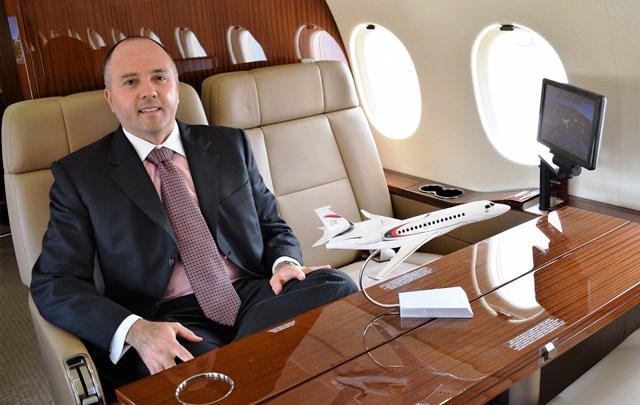In order to compete with a much lower cost base, one close enough or at the same cost level structure than short-haul Low Cost Carriers ("LCC"), a number of legacy carriers have launched or are planning to launch new brands within their holding umbrella to compete more efficiently in the Long-Haul Low-Cost ("LHLC"). segment Today, there are more LHLC models in service than at any point in history. Eurowings (Lufthansa), Rouge (Air Canada), Scoot (Singapore Airlines), Jetstar (Qantas), Air Asia X (Air Asia), Level (IAG Group) and Boost (Air France-KLM Group) are few examples. While there is no question, short-haul LCCs have stimulated a number of markets by lowering fares and adding frequencies, it is more difficult to replicate this kind of success in the LHLC segment. Therefore, it becomes even more strategic the need for a thorough business plan and fine tuned corporate strategy.
This article focuses on what are the key elements to build a sound LHLC business strategy that aligns revenue, cost, aircraft selection/seat configuration and route network for long term sustainability.
On the revenue side and to stimulate demand, it is key to develop a multi bucket fare strategy that optimizes load factors while prevents revenue leakage in order to protect unit revenues. In addition, a sound and aggressively pushed ancillary revenue strategy at multiple trip touch points becomes paramount. Moreover, product unbundling, crafting a bundled fare strategy and applying other incremental revenue techniques will lead to better total revenue generation.
On the cost side, the key cost advantage for LHLCs are associated with flight and cabin crew salaries, ground staff and management personnel estimated in some cases around 50% lower than a typical legacy carrier cost structure. In addition, important savings (or benefit reduction) can be observed in employee benefits, per diem structure and hotel/transportation costs. Furthermore, others important LHLCs savings can be derived from aggressively negotiated contracts regarding ground handling costs, airport fees, reduced cost per passenger through direct sales channels, aircraft maintenance and catering services, training costs, among others.
Concerning seat configuration and aircraft selection, a two-cabin class configuration seems to be the norm for LHLC carriers. Introducing a LHLC business class is a matter of trade-off between offering more sophisticated service and gaining higher yield traffic per cabin square footage. For a LHLC operation, a 2-class product that includes a premium fare product might assist not only in subsidizing lowest economy class fare tickets but also increasing profitability even during lower revenue months or off-peak season. On average, LHLCs offer 6% to 9% of total seat capacity as premium cabin product either called premium economy or business class while long-haul network carriers configured their premium cabins with 10% to 20% of total passenger capacity. Concerning flat bed products and the potential for higher yields, most LHLCs believe a flat bed product takes up too much space/weight and wont return the additional revenue lift needed. However, business class tickets can bring important revenues and typically make up a good portion of a flight revenues in some cases 50% or more. On that potential revenue enhancement front, out of 18 observed LHLC carriers only two (Air Asia X and Azul Airlines in Brazil) offer flat-bed products with 60 inches of seat pitch.
Regarding aircraft selection, Boeing 787-8 and -9 is the aircraft of choice for LHLC routes as they provide the lowest fuel consumption per block hour among all widebodies. In order to keep unit cost as low as possible and the highest RASM/CASM spread before other P&L items are considered, highly fuel-efficient aircraft are very cost effective. However, new entrants might not have the financial arm to negotiate large aircraft order discounts with enhanced financing options. Therefore, second hand aircraft market is still a good option. However, switching to newer and/or brand-new technology is key as soon as the airline is cash flow readily.
On a route network side and as there are very few purely dense leisure point-to-point Origin & Destination markets to choose from, feeder traffic at both ends of a route is needed in order to optimize load factors and revenues. Furthermore, maintaining high load factors with the least revenue leakage possible especially during off peak months (autumn and winter) might be impossible without feeder traffic. Therefore, commercial agreements and partnerships such as intralining, interlining, allowing self connections and alliances to generate traffic volumes are key.
Finally, strategic route planning decision-making must be sharpened to deregulated and low entry barrier markets, large cities with strong middle-class growth and fastest growing GDP economies keeping in mind that profitability rather than market share and maximizing growth is key as fine tuning a route network to extract higher yields is.
For a full copy of this article, you can contact the author through his LinkedIn page.
René Armas Maes BIO: René began his career as a Senior Analyst at Simat, Helliesen & Eichner based in New York City where he consulted global airline, regional aviation and corporate aviation customers. René is an international consultant with 15 years of experience in revenue and EBITDA growth, strategic planning, new product development, cost containment and business restructuring.
He has participated in a number of global Low-Cost Carrier feasibility and review projects in Europe, Asia-Pacific and Latin America. Through his professional career, he brings a key focus on transforming businesses, expanding profitability, optimizing day-to-day operations and returns.
René is an IATA instructor and he earned an MBA from John Molson School of Business in Canada. Today, he manages Jet Link International LLC an aviation consultancy firm and leads a number of professional consultants on international engagements.



